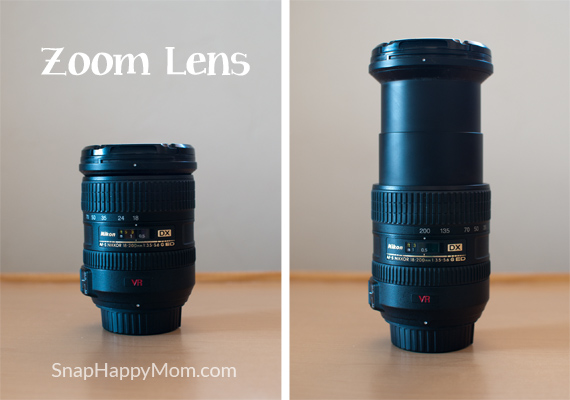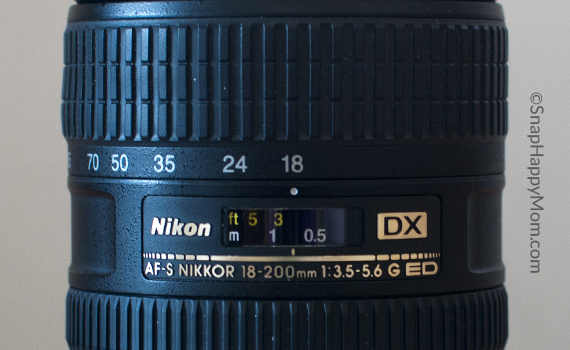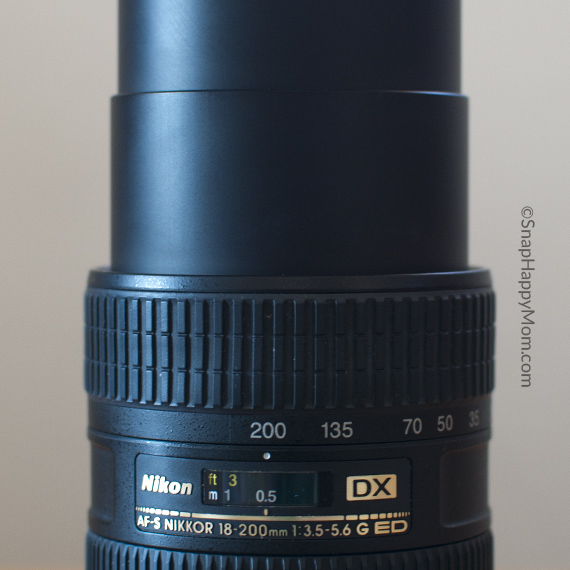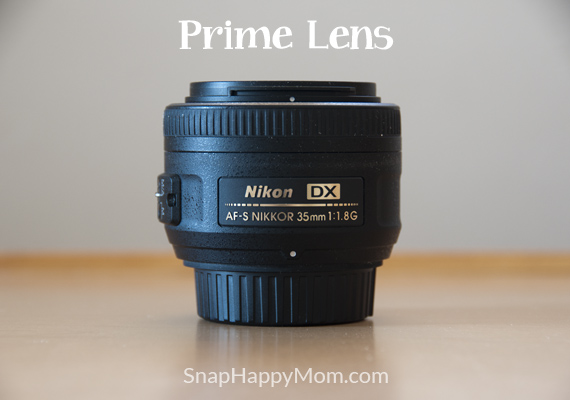The world of photography can be very overwhelming, with all the lingo, numbers, and technical descriptions. So, here's a simple introduction to the two different types of lenses and how they work.
This is a zoom lens. See how it expands and retracts like a telescope? The lens is constructed in such a way that part of the lens twists, moving the front part of the lens closer or farther away from the subject. This is changing the focal length inside the lens, but what it means is that you can “zoom in” and “zoom out.”
When you are "zoomed in", you can get a closer picture without actually being closer to your subject. For instance, if you're at a soccer game, you can't exactly go on the field to get a good close up of your son as he shoots the ball. But with a zoom lens, you can get closer to that action without moving your feet.
Zoom lens come in all different sizes, which are described by indicating the range of possible focal lengths for that lens, from a lower number to a higher number. Look at the text at the base of this lens, right in the middle. See how it says 18-200 mm? That's the range of possible focal lengths for this particular lens, or how what the camera "sees" will change as you zoom.
See the dot right in the middle of the picture? Above it is a zoom ring of possible focal lengths (18, 24, 35, 50, 70, and more off screen). See how the dot is lined up by the 18? That means the lens is currently set at a very wide angle, known as fully retracted or "zoomed out," (like the left side of the first picture on the post). If you were to look through it, you'd be able to see everything laid out in front of you, almost all the way out to your peripheral vision.
Now look at the dot in this next picture- see how it's lined up with the number 200? The whole lens has moved as I twisted that zoom ring, so now it's fully "zoomed in," or extended (like the right side of the first picture on the post). A high number like 200 for a focal length is like looking through a telescope- you can only see directly in front of you, but you can see much further away. Like being a pirate!
Many cameras come with a kit lens, which is often a 18-55 mm lens. That means it will move from a very wide point of view at 18mm, to a fairly normal point of view at 55 mm, and everywhere in between.
A zoom lens is a complicated technology, so the cost of these lenses is automatically going to be somewhat higher because it has more moving parts. However, they're really nice to have as a parent, because there are lots of situations where you want flexibility of a zoom lens because you can't actually move. They are also nice for when kids can't sit still, because you can compose your shot without needing them to stand in a certain place.
Then, there are prime lenses, which look like this:
These are often labeled fixed-length because the lens does not move- it’s "fixed" in place to take pictures at a certain focal length. If you compare it to the lens above, you'll notice it lacks a zoom ring. This lens is labeled 35 mm, which means the lens will always take pictures at that specific focal length.
These lenses are often smaller and lighter because there is just less glass involved. (There are exceptions of course, like the huge, fixed-length telephoto lenses that you see on the sidelines at a football game.) Because there is no need to expand and collapse a zoom lens, there are some good basic lenses that that can be purchased quite cheaply. However, the price range just goes up and up from there, and certain configurations of focal length and and f-stop are very expensive.
As a parent, the main reason you would want a prime lens is because there are some low-budget prime lenses that let in much more light than their zoom counterparts. More light means you can take better photos indoors without a flash. At least at my house, a good percentage of photographic moments happen indoors, so I really appreciate having a lens that performs well inside.
Now you understand the main differences between a prime lens and a zoom lens, and you're ready to think about situations where one type of lens would be more useful than a different kind. I'll talk about this more in another post!






Cheryl says
Great explanation, helpful tips!